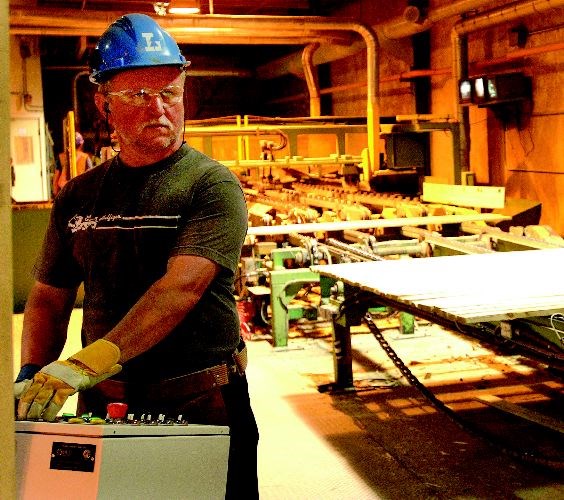The smell of sawdust was in the air and the grind of blades could be heard biting into wood at the Lakeland Mills site Wednesday.
The machines were switched on at Lakeland's planer mill on Monday for the first time since an explosion ripped the sawmill apart on Apr. 24, killing two employees, injuring 22 others, and destroying the main factory at the lumber complex.
There was some wood already milled and stacked waiting to be planed, however, and this week a crew of 22 men and women began to process it for market.
It is a small group compared to the workforce - about 100 - on the job at any given time before the disaster. Yet, said company president Greg Stewart and operations manager Mike Richard, the sigh of hope exhaled by the entire Sinclar Group of forestry interests was almost audible.
"It's good. People love it," said Stewart who, a day after the explosion was fighting tears but on Wednesday could hardly resist a perpetual grin as he watched employees back at their familiar stations. "Some of our people have been with us 35 years. It gets in your blood and you don't realize how much you miss it until it's gone."
The cache of rough lumber will produce about seven million board-feet of planed lumber, over a six-week period. It is already being wrapped in bundles for rail and road transport to U.S. lumber stores, domestic customers and even some offshore orders that can be at least partially filled before the stack runs out.
Most of the planing going on in this six-week period will finish off 2-by-4s, but there is also some 2-by-6 planing and some one-inch dimensions as well.
The explosion hit at the peak of the log hauling season, just before the spring road bans took effect. About 160,000 cubic metres of unprocessed logs lay in the Lakeland yards but with no saw mill, they will have to stay there for the time being.
Also in piles, right alongside the planer mill, is wreckage from the blackened, contorted hulk of the sawmill structure next door. Everyone working the planer mill can see it as they arrive and leave work.
"We had a crew meeting before we started up the planer again, and we had counselling resources standing by in case anyone needed it, but everyone was able to carry on and there was no signs of distress," said Richard.
The 22 workers were hired for this project from a pool of employees who indicated their interest during management consultations. Stewart said company meetings with employees are regular and ongoing, and the planer's temporary startup was part of the discussions. He added that the company had no intention of running the planer until the employees self-identified as being ready for it, in conjunction with getting permission from the investigators of the explosion scene.
"The employees understood our challenges, we worked through it together to this point, we continue to work together, and they have met those challenges with us with great morale."



